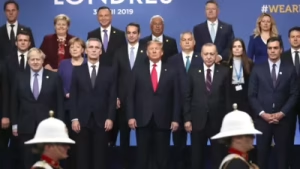GS2 – International Relations

Context:
At the 2025 NATO Summit, member nations agreed to increase defence spending to 5% of GDP by 2035, citing rising security threats from Russia and pressure from the U.S.
Key Drivers of Change:
- Russia’s aggression post-2022 Ukraine invasion.
- Persistent terrorism threats in unstable global regions.
- U.S. President Donald Trump urged NATO allies to bear more of the financial burden, hinting at a reduced American military presence if they fail.
Major Developments:
- Continued military and financial support to Ukraine.
- Emphasis on diplomatic efforts alongside defence upgrades.
- Growing push for European defence autonomy amid U.S. strategic pivots to the Indo-Pacific and Middle East.
Challenges:
- Budgetary pressures in countries like Spain, Belgium, and Slovakia.
- Uneven threat perceptions, with countries like Hungary skeptical about Russia’s intentions.
- Socio-economic trade-offs, with defence spending impacting welfare budgets.
Implications for India:
- Security Architecture Realignment: Indicates a shift towards self-reliance within alliances; India should observe NATO’s strategic recalibration.
- Strategic Engagement: The Indo-Pacific militarisation offers India new scopes for partnerships through blocs like QUAD and AUKUS.
- Defence Industry Prospects: Rising NATO defence budgets can create opportunities for Indian defence exports and joint ventures.




